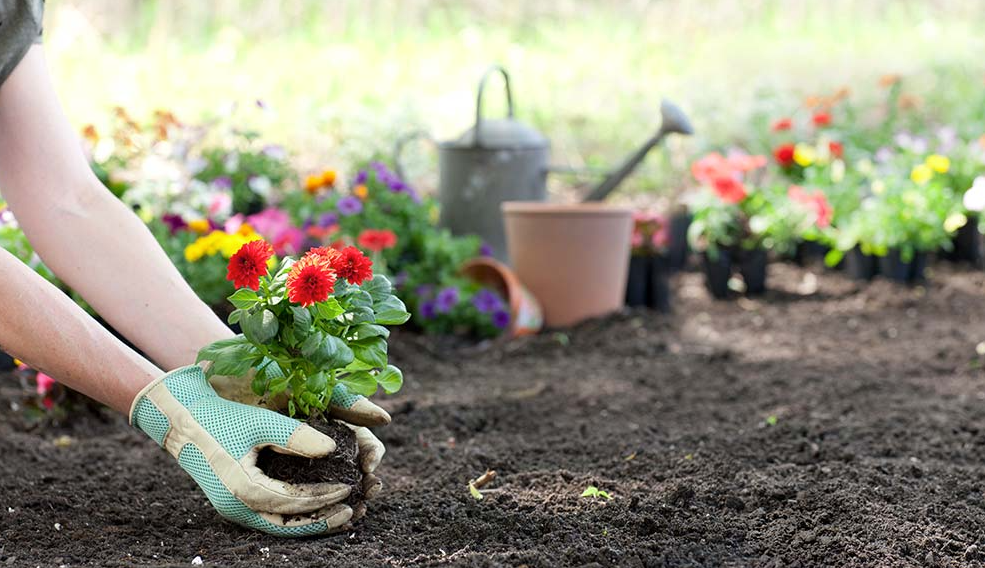Garden soil is a complex mixture of natural materials and minute, coarse grains called pebbles or stones which are well mixed with organic materials to drain easily and retain water. It is the perfect condition for most vegetables and fruits to grow. The main purpose of garden soil, according to most gardeners, is to hold in the moisture, help the plant take root, and hold in the nutrients for the plants to thrive. Unfortunately, most gardeners do not know much about the garden soil types and how to make the best use of the natural ingredients in it. Soil is one of the most important parts of any garden and the soil types can be more important than the garden plants themselves.
Basics
Most garden soil consists of one of the following combinations: Culinary, Soilic, Clay, Rock, Green (agricultural), or Aquatic. Each type of soil contains different levels of nutrient availability for the plants. The combination of these four garden soil types is beneficial to different plants and the result is the growth and the harvest of the plants. When to Increase Garden Sizes with amendments If your garden soil has a combination of the above-mentioned garden soil types, then the soil can support higher plant density.
Increase the Size of Your Vegetables and Tomatoes by Composting Organic Matter Composting is an easy way to improve the garden soil structure. You simply add organic matter into the compost pile, mix in the compost, let the pile sit, and go to the garden to harvest. By adding organic matter, your soil will hold in the extra moisture, the nitrogen and the trace elements will be locked in the garden soil, and the plant roots will have a better chance of reaching the light and water that they need to grow. By composting your garden soil, you will also improve the quality of the soil and make it more helpful in the garden.
Improve the Soil
To improve the garden soil for your crops, the first thing you should do is add nitrogen to the soil. The good news is that it already contains a lot of nitrogen, so all you need to do is to give it a little bit of extra nitrogen. The best way to add nitrogen to the garden soil is through the use of topsoil. If it contains a lot of topsoils, you can simply add the surplus topsoil to the compost heap and mix it in with the compost.

A good way to add nitrogen to the garden soil is by taking manure from the animals you keep in your barn or at your local feedlot. You may also consider using decomposed fish emulsion. The advantage of using manure and the decomposed fish emulsion is that you are recycling animal wastes. The disadvantage of the two is that the decomposed material may not smell very good. However, the smell will go away if the material is mixed in with the garden soil.
Soil Texture
In addition to the garden soil, you should also consider the garden soil texture. There are four soil texture types: coarse, medium, fine and soft. Each soil texture has different requirements in terms of the nutrients that it can absorb. For example, the coarse soil texture absorbs lots of nutrients like iron and calcium. On the other hand, the medium soil texture can absorb lots of nutrients, but the plants won’t have enough room to grow.
On the other hand, the fine soil texture can benefit from the potassium and nitrogen that the plants are already getting. But the best thing to do to improve garden soil is to add some humic acid. This acid can improve the structure of the soil and improve its ability to retain water. The water will then seep into the deeper layers. You can easily determine the levels of acid in your existing garden soil by testing the pH level. Most plants won’t recognize the test because the pH level is different from the neutral level.
Some of the most common ingredients for improving the garden soil are fish manure, alfalfa hay, alfalfa, clover, chicory root, iron, manganese, phosphorus and zinc. These natural ingredients can help improve the quality of the existing soil. You can simply use these ingredients in their natural forms or the form of powder or pellets. If you add animal manure to the mix, the animals themselves can help break down the dead plant material and excrete the nutrients in the soil. In addition to this, you can also find other animal-based products in the market that can improve garden soil like animal biogas and compost.






